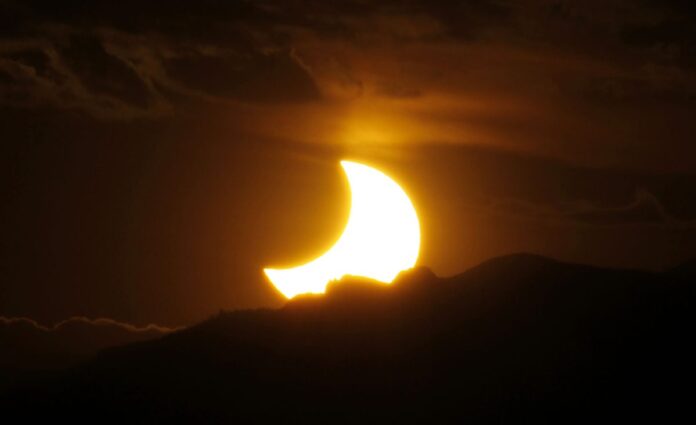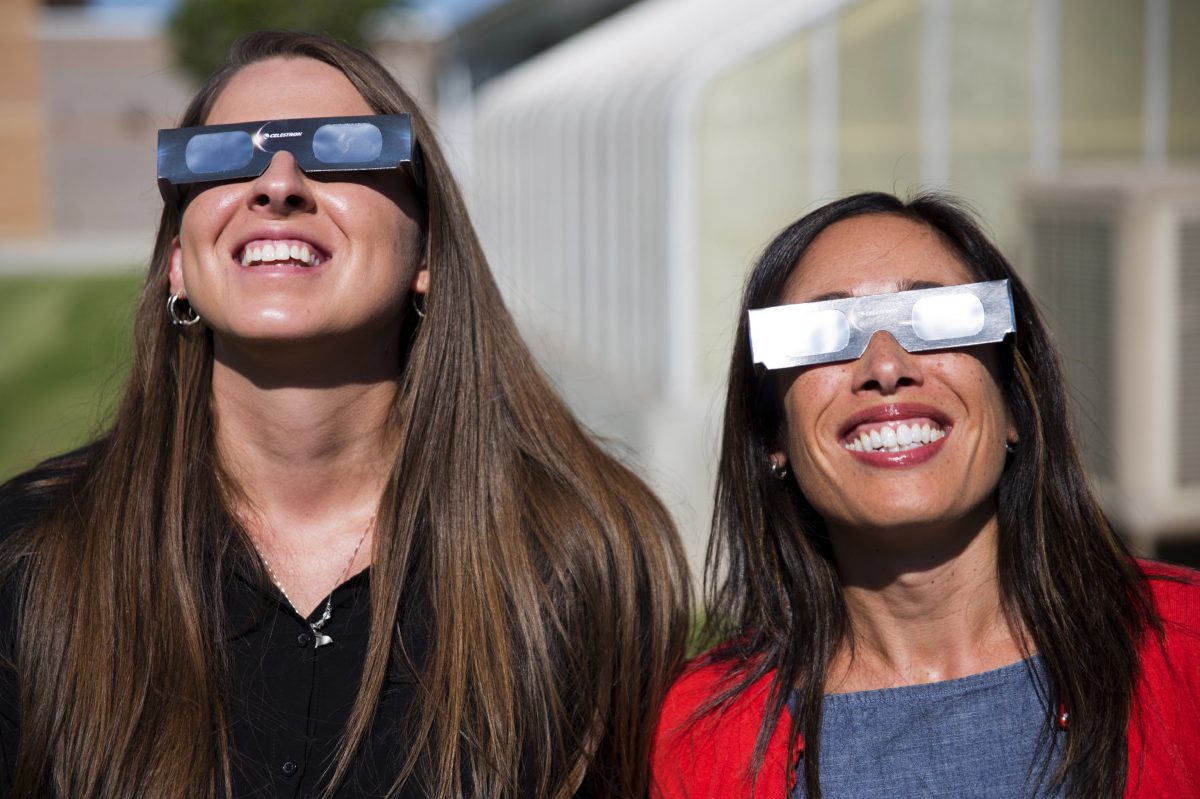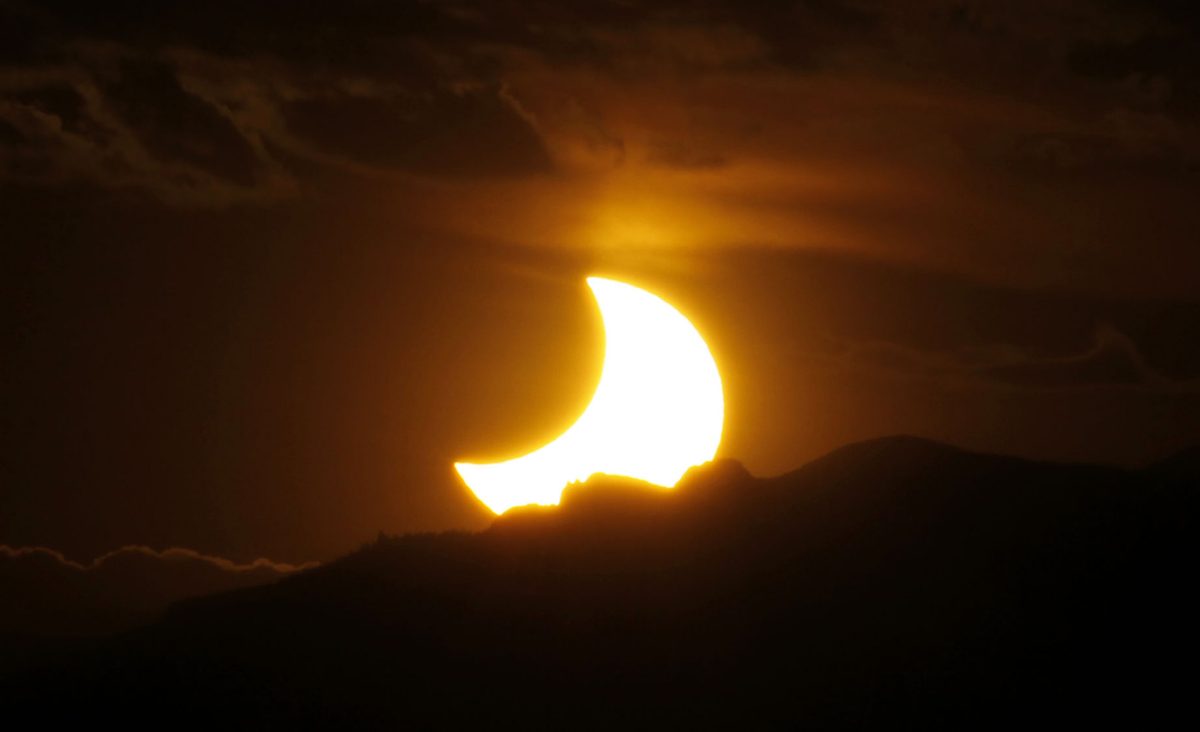
HARLINGEN — Andy Miller has been planning for decades to be in the best place to view tomorrow’s solar eclipse.
But that won’t be in the Valley.
The astronomy teacher plans to be in southwestern Kentucky, where he believes he will get the best and longest view of the total eclipse.
“It’s an interesting curiosity,” Miller said about the phenomenon that occurs yearly in different parts of the Earth. “The whole eclipse will last almost three hours.”
The total eclipse can be seen only across a 70-mile-wide swath of land from Oregon to South Carolina. Points north and south of that arc will see a partial eclipse.
What is special about this eclipse is it starts out in the Pacific and winds up in the Atlantic, going across the entire continental United States, said Miller, 61, a St. a Joseph Academy astronomy teacher and chief instructor for UTRGV’s STARGATE Academy, a center that allows high school students to experience modern astrophysical research and learn basic astronomy.
He said it’s a once-in-a lifetime event in the sense that the eclipse will travel across the U.S.
“It is going across several major cities, so in that sense, it’s a once-in-a lifetime event,” Miller said. “It gives a lot of people in the U.S. a chance to see the eclipse.”
The moon will start blocking part of the sun and slowly cover more and more until it reaches a maximum of almost 50 percent here in South Texas.
“If you don’t know about it or are not looking for it, you’ll miss it,” Miller said.
But experts warn not to look directly at the sun. The sun’s UV radiation can burn the retinas in the eyes, leading to permanent damage or even blindness.
“If you look at the sun too long you will burn your retina. The longer you look, the greater the damage,” Miller said. “If you were to stare at the sun on a regular day, it would have the same damaging effect. But on a regular day, people don’t go stare at the sun.”
The safest thing to do is to project an image of the eclipse.
By poking a pinhole into a piece of cardboard, the image of the sun can be projected onto another surface.
“There are special glasses that are protective,” Miller said. “I would not hesitate to use those if they are from a reputable company. But projecting the sun’s image is the safest way.”
It’s not only been Miller’s duty, it’s been his pleasure to teach students and others about solar and lunar eclipses.
“For years, I’ve told people there are eclipses in different parts of the world,” Miller said.
He said eclipses are so regular they can be predicted thousands of years into the future.
“What we are going to be able to observe here is really not once-in-a-lifetime,” Miller said. “There is a little more than one total solar eclipse a year somewhere on Earth.”
BEGINS: 11:47 a.m. tomorrow
MAXIMUM: 1:15 p.m.
ENDS: 2:42 p.m.
DURATION: 2 hours, 55 min.
Total solar eclipses occur when the New Moon comes between the Sun and Earth and casts the darkest part of its shadow, the umbra, on Earth.
The Moon covers the entire disk of the Sun. A full solar eclipse, known as totality, is almost as dark as night.
Partial solar eclipses happen when the Moon comes between the Sun and Earth, but the Moon only partially covers the Sun’s disk.
* Never look directly at the sun without proper eye protection.
* Homemade filters or ordinary sunglasses, even very dark ones, are
not safe for looking at the sun.
* The American Astronomical Society reports official glasses are available
at some locations with the following retail chains: 7-Eleven, Best Buy, Circle K, Hobby Town, Kirklands, Lowe’s, Pilot/Flying J and Toys “R” Us.
McAllen Nature Center
WHEN: 12:15 p.m. Monday
WHERE: McAllen Nature Center, 4101 U.S. Business 83, McAllen
Bring water, snacks or a picnic lunch, and blankets if desired. Kona Ice will be on site with raspas available for sale. In the event of cloudy weather, this event will be canceled.
McAllen Public Library
WHEN: Noon Monday
WHERE: McAllen Public Library, 4001 N. 23rd St., McAllen
Food and fun at our solar eclipse viewing party. Free viewing glasses will be distributed at the event while supplies last.
Estero Llano Grande State Park
WHEN: Noon Monday
WHERE: Estero Llano Grande State Park, 154A Lakeview Drive, Weslaco
UTRGV
WHEN: 11 a.m. Monday
WHERE: University of Texas Rio Grande Valley, next to the Physical Science Building
Thanks to the American Institute of Physics, we will be able to provide 100 free glasses to see the eclipse.
We also plan to have a short talk on how these eclipses happen, as well as a live stream from NASA and other organizations of the eclipse.
Southmost Public Library
WHEN: Noon Monday
WHERE: Children’s Museum of Brownsville, 501 E. Ringgold St., Brownsville
NASA astronaut Michael Edward Fossum will attend.





